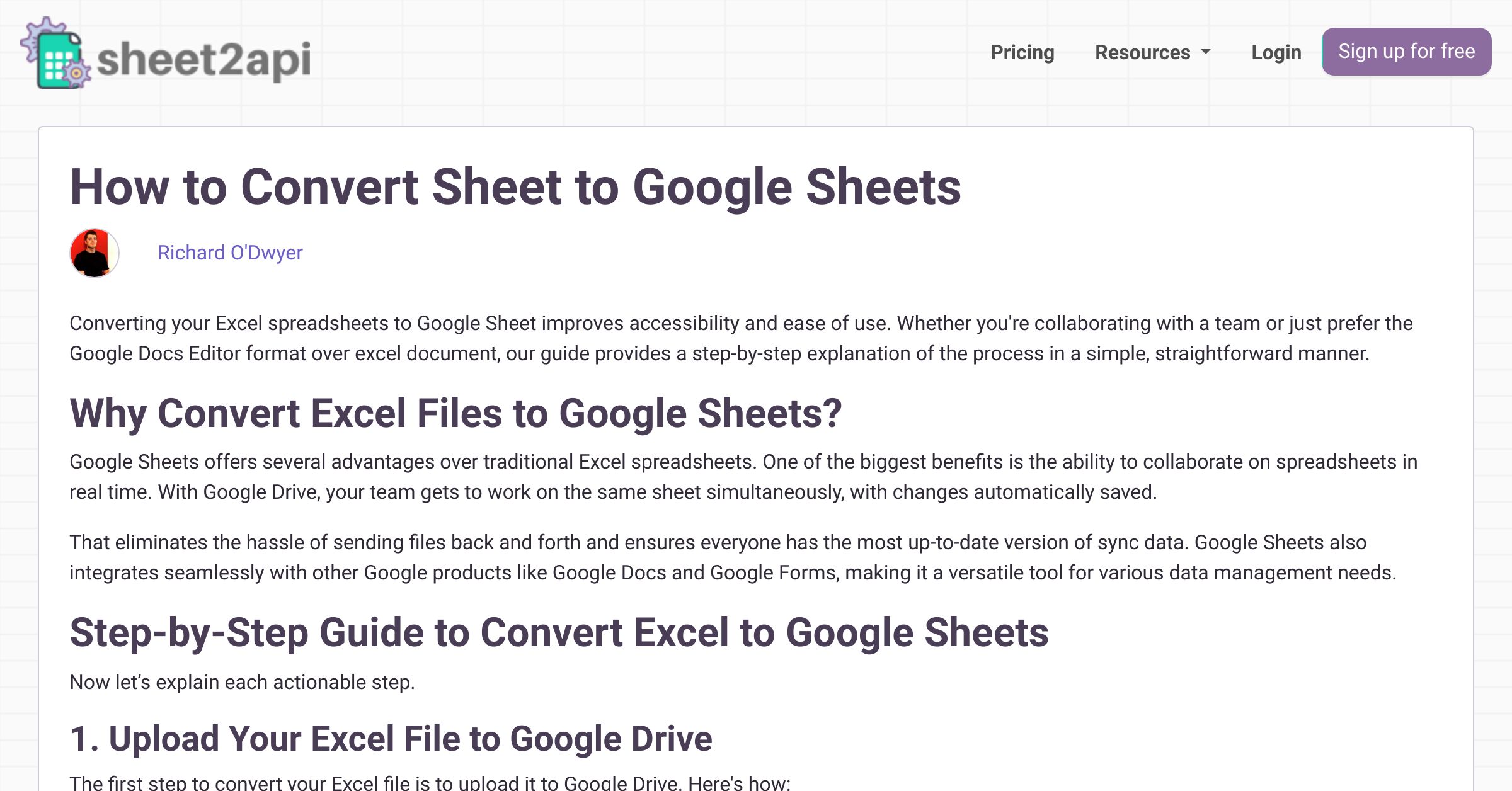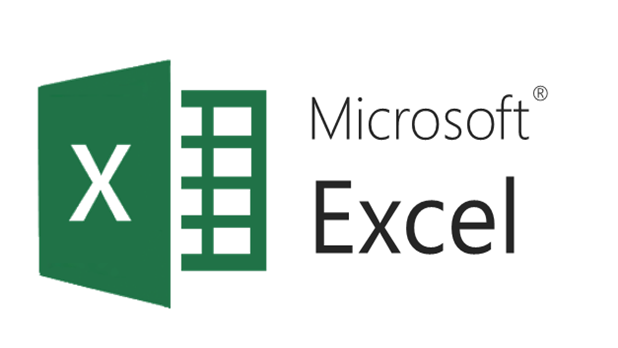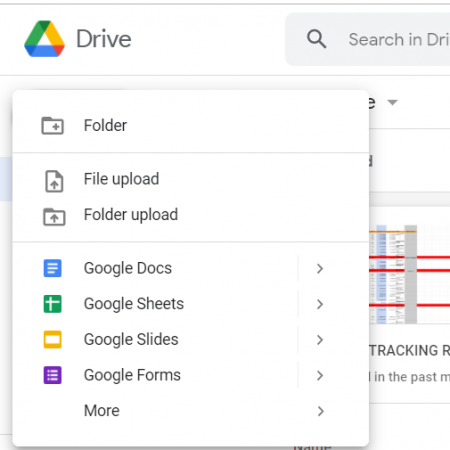Convert Excel Sheets to Google Docs Easily

In today's digital work environment, efficiency and collaboration are key. Converting Excel sheets to Google Docs can streamline your workflow, allowing you to share data with your team in real-time and reduce the hassle of format compatibility issues. In this comprehensive guide, we'll walk through the steps to seamlessly convert Excel sheets to Google Docs, ensuring that the data remains intact and is presented in a Google-friendly manner. We'll explore different methods, from the simplest approach of importing data directly to using third-party tools for more advanced needs, providing you with the flexibility to choose the best option for your situation.
Why Convert Excel to Google Docs?


Before diving into the technical details, understanding the benefits of this conversion can better motivate you to make the switch:
- Collaboration: Google Docs supports real-time editing and comments, making it ideal for team work.
- Accessibility: Since Google Docs is web-based, you can access your files from any device with internet, anytime.
- Cost: Google Docs is free, while Microsoft Excel requires a subscription to Microsoft 365 for full features.
- Integration: Google Docs integrates smoothly with other Google services, enhancing productivity.
⚠️ Note: When converting Excel to Google Docs, ensure sensitive data is handled carefully due to cloud storage concerns.
Direct Importing

The most straightforward method to convert an Excel file to Google Docs involves:
- Open Google Drive in your browser.
- Click on “New” and select “File upload.”
- Upload the .xlsx file from your computer.
- Once uploaded, right-click the file in Google Drive.
- Select “Open with” then “Google Sheets.”
- From Google Sheets, click “File,” then “Download” and select “Microsoft Word (.docx)” to download the sheet as a Word document.
- Upload the .docx file to Google Drive and open it with Google Docs.
This method is simple but may not be ideal for complex spreadsheets with formulas or specific formatting.
Using Google Drive Add-ons

Google Drive offers add-ons that can automate the conversion process:
- Install an add-on like “DocuSign” or “Spreadsheets to Docs” from the Google Workspace Marketplace.
- Authorize the add-on to access your Google Drive.
- Use the add-on to convert your Excel file. Instructions vary by add-on, but they generally provide a user-friendly interface for file selection and conversion settings.
- Download or save the converted document in Google Docs format.
These tools offer more customization options but require learning the specific functions of the add-on.
| Add-on Name | Features |
|---|---|
| DocuSign | E-signatures, Collaboration |
| Spreadsheets to Docs | Formatting Preservation, Table Insertion |

Third-Party Online Conversion Tools

If you’re looking for flexibility, several online tools can convert Excel to Google Docs:
- Smallpdf: Offers file conversion with a user-friendly interface.
- Zamzar: Known for its speed and variety of format options.
- Convertio: Supports numerous input formats with conversion to Google Docs.
The process typically involves:
- Upload your Excel file to the service.
- Choose Google Docs or a similar format for output.
- Convert the file.
- Download the converted file and upload it to Google Drive to open it with Google Docs.
Considerations Before Converting

- Preserve Formatting: Some formatting might not translate perfectly from Excel to Google Docs.
- Formulas and Functions: Excel’s complex formulas might not work in Google Docs, which uses simpler spreadsheet capabilities.
- Table Data: Converting tables from Excel to Google Docs can result in potential layout issues.
- File Size: Larger Excel files might take longer to convert or require more resources.
🔍 Note: Always double-check your converted document for any missing or misplaced data.
Steps to Enhance the Conversion Process

Here are some additional steps to improve your conversion:
- Clean Up Data: Remove any unnecessary formatting or data from the Excel file before converting.
- Use Simple Formatting: Stick to basic cell styles, colors, and formats to minimize conversion issues.
- Break Large Spreadsheets: Split very large spreadsheets into smaller sheets for smoother conversion.
- Back Up: Always keep a backup of your original Excel file, as data loss can occur during conversion.
By now, you should be well-informed about the various methods to convert your Excel sheets into Google Docs format. Whether you opt for the simplicity of direct importing, the customization of add-ons, or the versatility of third-party tools, the key is to choose the method that best fits your project's needs. The transition to Google Docs not only enhances team collaboration but also makes your work more accessible and manageable. Remember to review your documents post-conversion to ensure all data is correctly presented, and consider backing up your files to avoid potential loss. Each method has its strengths, allowing you to continue leveraging the power of both Excel and Google Docs, ultimately making your workflow more seamless and productive.
Can I convert Excel files with charts and graphs?

+
Yes, many conversion methods will transfer charts and graphs, though some formatting might change or not transfer perfectly.
Is there a loss of data during the conversion process?

+
There can be data loss, especially with complex formulas or conditional formatting, but simple data and basic formatting usually transfer well.
How do I share the converted Google Doc with my team?

+
After converting, you can share the Google Doc by inviting team members via their Google accounts or by generating a shareable link.
What if my Excel file contains macros?

+
Macros are not supported in Google Docs. Consider using Google Apps Script to recreate functionality after conversion.
Can I automate the conversion process?

+
Automation is possible with tools like Zapier or custom scripts, especially for bulk conversion or regular updates.



